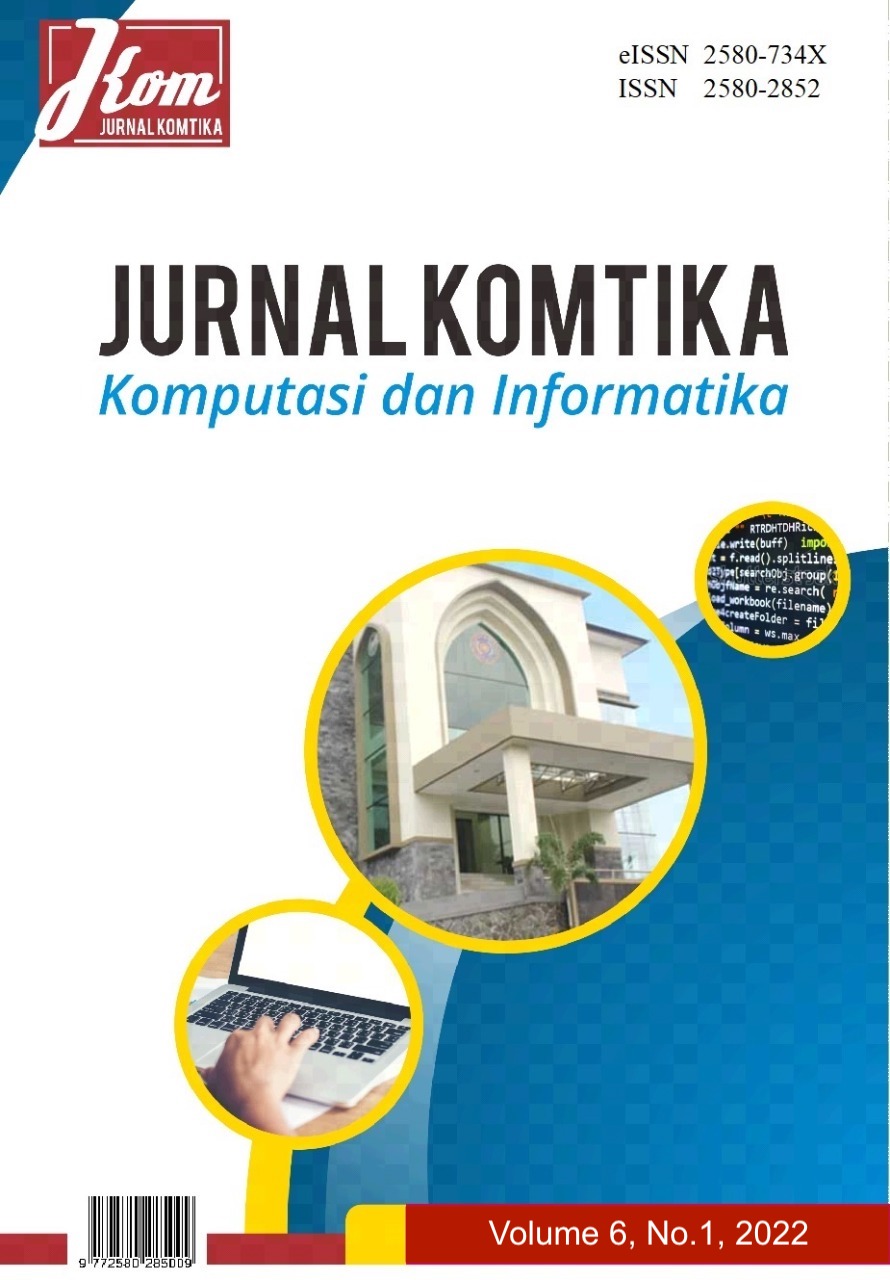Main Article Content
Abstract
Through e-learning students are encouraged to learn from their homes individually and not in groups as in traditional learning where there are classes and study groups. This gives students the opportunity to organize their time according to their preferences as they attend individual online courses in their homes. They also have the freedom to choose the online courses that they find useful for them and their needs. This study aims to explore and examine the factors that influence the behavioral intention of students to use e-learning. The relationship between TAM variables and Innovation Diffusion Theory is integrated and explored to answer this goal. This research was conducted on 238 students of Muhammadiyah Metro University as active e-learning users. The findings show that of the 13 hypotheses developed, there are 4 that were rejected. It was found that there was no effect between Relative Advantage and Perceived Usefulness, Perceived Compatibility on Perceived Usefulness, Relative Advantage on Perceived Easy of Use, and between Perceived Easy of Use and Perceived Usefulness.
Keywords
Article Details

This work is licensed under a Creative Commons Attribution-NonCommercial 4.0 International License.
References
-
[1] H. R. Amado-Salvatierra, J. R. Hilera, S. O. Tortosa, R. H. Rizzardini, and N. Piedra, “Towards a semantic definition of a framework to implement accessible e-learning projects,” J. Univers. Comput. Sci., vol. 22, no. 7, pp. 921–942, 2016.
[2] S. S. Liaw and H. M. Huang, “Perceived satisfaction, perceived usefulness and interactive learning environments as predictors to self-regulation in e-learning environments,” Comput. Educ., vol. 60, no. 1, pp. 14–24, 2013, doi: 10.1016/j.compedu.2012.07.015.
[3] W. M. Al-Rahmi et al., “Use of E-Learning by University Students in Malaysian Higher Educational Institutions: A Case in Universiti Teknologi Malaysia,” IEEE Access, vol. 6. pp. 14268–14276, 2018. doi: 10.1109/ACCESS.2018.2802325.
[4] F. A. D. M. Pereira, A. S. M. Ramos, M. A. Gouvêa, and M. F. Da Costa, “Satisfaction and continuous use intention of e-learning service in Brazilian public organizations,” Computers in Human Behavior, vol. 46. pp. 139–148, 2015. doi: 10.1016/j.chb.2015.01.016.
[5] C. S. Ong, J. Y. Lai, and Y. S. Wang, “Factors affecting engineers’ acceptance of asynchronous e-learning systems in high-tech companies,” Inf. Manag., vol. 41, no. 6, pp. 795–804, 2004, doi: 10.1016/j.im.2003.08.012.
[6] J. G. Chaka and I. Govender, “Students’ perceptions and readiness towards mobile learning in colleges of education: A Nigerian perspective,” South African J. Educ., vol. 37, no. 1, pp. 1–12, 2017, doi: 10.15700/saje.v37n1a1282.
[7] K. A. Pituch and Y. kuei Lee, “The influence of system characteristics on e-learning use,” Comput. Educ., vol. 47, no. 2, pp. 222–244, 2006, doi: 10.1016/j.compedu.2004.10.007.
[8] W. M. Al-Rahmi, M. S. Othman, and L. M. Yusuf, “Exploring the factors that affect student satisfaction through using E-learning in Malaysian higher education institutions,” Mediterr. J. Soc. Sci., vol. 6, no. 4S1, pp. 299–310, 2015, doi: 10.5901/mjss.2015.v6n4s1p299.
[9] M. Al-Qahtani, M. Al-Qahtani, and H. Al-Misehal, “Learner satisfaction of e-Learning in workplace: Case of oil company in Middle East,” Proc. 2013 10th Int. Conf. Inf. Technol. New Gener. ITNG 2013, pp. 294–298, 2013, doi: 10.1109/ITNG.2013.47.
[10] H. Mohammadi, “Investigating users’ perspectives on e-learning: An integration of TAM and IS success model,” Comput. Human Behav., vol. 45, pp. 359–374, 2015, doi: 10.1016/j.chb.2014.07.044.
[11] A. Tarhini, K. Hone, and X. Liu, “Extending the TAM model to empirically investigate the students’ behavioural intention to use e-learning in developing countries,” Proc. 2013 Sci. Inf. Conf. SAI 2013, no. September 2015, pp. 732–737, 2013.
[12] T. H. Chu and Y. Y. Chen, “With Good We Become Good: Understanding e-learning adoption by theory of planned behavior and group influences,” Comput. Educ., vol. 92–93, pp. 37–52, 2016, doi: 10.1016/j.compedu.2015.09.013.
[13] V. Chang, “International Journal of Information Management Review and discussion : E-learning for academia and industry,” Int. J. Inf. Manage., vol. 36, no. 3, pp. 476–485, 2016, [Online]. Available: http://dx.doi.org/10.1016/j.ijinfomgt.2015.12.007
[14] E. Livote, “Introduction to Structural Equation Modeling Using SPSS and AMOS. Niels J. Blunch. Thousand Oaks, CA: Sage, 2008, 270 pages, $39.95.,” Struct. Equ. Model. A Multidiscip. J., vol. 16, no. 3, pp. 556–560, 2009, doi: 10.1080/10705510903008345.
[15] F. Monecke, A. and Leisch, “semPLS : Structural Equation Modeling Using Partial Least Squares,” J. Stat. Softw., vol. 48, no. 3, pp. 1–32, 2012.
[16] Hu L.-T. and Bentler P. M., “103. Cutoff criteria for fit indexes in covariance structure analysis: conventional criteria versus new alternatives.,” Struct. Equ. Model., vol. 6, no. July 2012, pp. 1–55, 1999.
[17] J. F. Hair, W. C. Black, B. J. Babin, and R. E. Anderson, Multivariate data analysis. Pearson Education Limited. 2014.
[18] J. . Nunnally, Psychomatric Theory. New York: McGraw-Hill, 1978.
[19] J. Nunnally and I. Bernstein, Psychomatric Theory, 3rd Edition. New York: McGraw-Hill, 1994.
[20] R. B. Kline, Principles and Practice of Structural Equation Modeling, vol. 77, no. 27. 2011. doi: 10.1038/156278a0.
[21] W. W. Chin, “Issues and opinion on structural equation modeling. MIS Quarterly, MIS Quarterly & The Society for Information Management,” pp. 1–1, 1998.
[22] M. Li, Z. Xu, L. Yu, M. Lei, and B. An, “Application Research on Coal Analysis of Near Infrared Spectroscopy (NIRS) by Intelligent Algorithms,” pp. 2416–2419, 2010.

